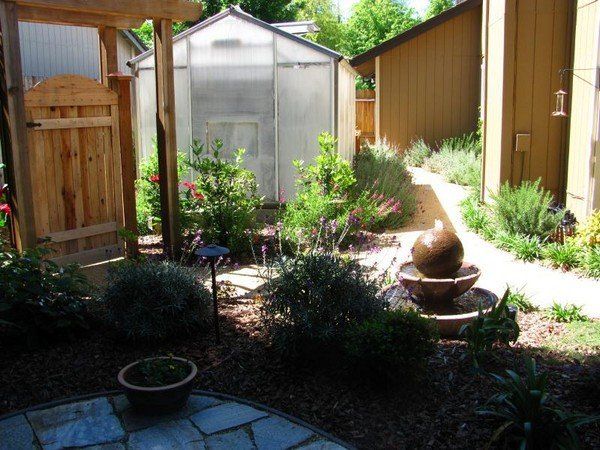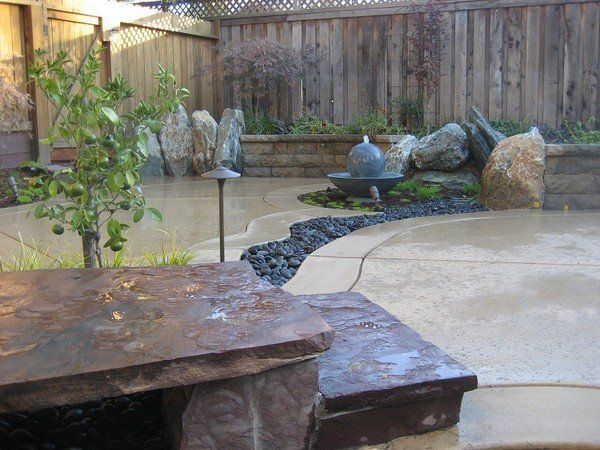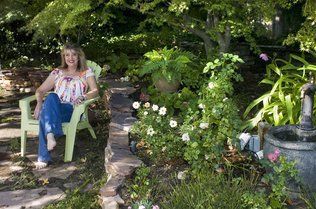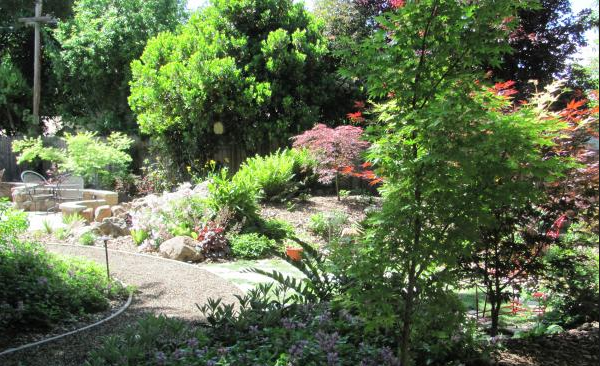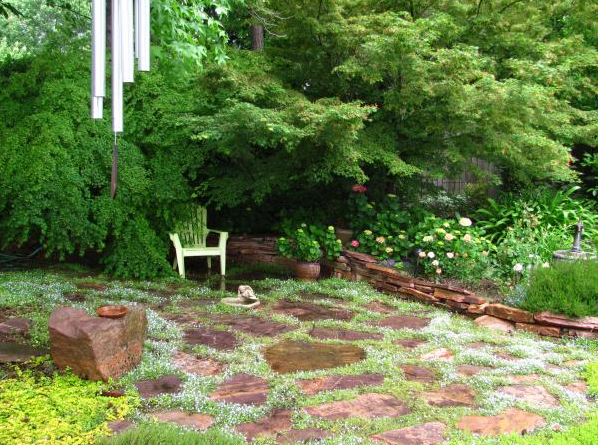Xeriscape with a zen garden
- By Susan Silva
- •
- 01 Apr, 2014
- •
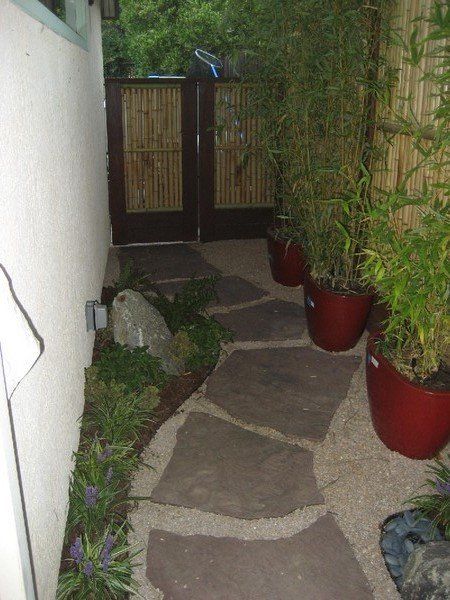
A side yard is often used for storage and growing weeds. It can be a place in the yard we more or less forget about.
This family wanted to change their unused side yard to something very special with an Asian flair. It was the primary route from the front yard to the pool in the rear and was also accessible to a bedroom from the sliding glass door. It needed to be something more than just a shed area to store paint cans and the plastic Santa used at Christmas.
The family wanted a special place to enjoy for relaxation and reading a good book. The teens wanted a place for tea parties. It needed to be easy care with drought tolerant plants for this busy family.
The conceptual landscape design addressed the change beautifully and dramatically. Flagstone, gravel, boulders, an Asian stone fountain, bamboo fencing and Asian gates were incorporated. A low wooden bench for lounging was built in the corner for comfort and conversation. Bright red glazed pots planted with black stemmed bamboo created the vertical impact against the fence and for privacy from the windows.
I designed the plan with curves, mimicking the flow of water. A flat yellow stone created the illusion of a bridge to cross from one area to the other. Each boulder was right sized and perfectly placed to flow with the Asian theme.
Making the change to a drought tolerant/easy care yard can incorporate beautiful zen features like this one does. It can be designed into a small yard and can be featured into a larger yard.
Among other plants designed into this plan were Japanese maples, ornamental grasses, camellias, yew pine and scotch moss. This was a shady side yard where these plants would thrive with much less water.
I recommended Steve Irwin and his crew of Alpine Terrace Landscaping to engineer and implement my conceptual design. They did a beautiful job installing this Zen garden.

It will take thirty years to replace a thirty year old tree. A lawn can be restored in just a couple of months.
Kyle Floyd, with Green Acres Nursery reminds customers that it's the lawn that is the larger culprit for consuming water and not the trees. Unlike lawn, a majority of trees can withstand drought, but still need to be properly watered based on the tree's species and size.
It's essential to understand trees and their water needs. Most tree roots are in the top eighteen inches of soil, but studies show the greatest number of tree roots consuming water, oxygen and nutrients are in the top six to eight inches.
- A general rule is to use approximately ten gallons of water per inch of the trunk's diameter (width of trunk measured at knee level) for each watering. General formula: Tree diameter times five minutes equals total watering time.
- Example: When hand watering using a garden hose at medium pressure, it will take about five minutes to produce ten gallons of water. For a four inch diameter tree, it should receive forty gallons of water. Multiply by five minutes for a total watering time of twenty minutes.
- Distribute water evenly under the tree's dripline.
Water early in the morning or after the sun has gone down. These are the times when trees restore the water lost during the day. Also, be sure to add mulch around the trees to reduce soil temperature and decrease water evaporation.
Soaker hoses and drip systems keep the trees healthy while using less water. They soak into the ground where the water is needed, and not run into the street and drains. Long, slow watering to a depth of twelve inches with soaker hoses or in-line emitter drip systems buried below three to four inches of wood mulch is often recommended. Generally in warmer months, younger trees need to be watered twice a week, and most mature trees every two weeks.
Landscape contractor, Steve Irwin of Alpine Terrace Landscaping often advises using soaker hoses placed around the drip zone (area shaded) of the tree with timers. For extra large established trees like Sequoia sempervirens (Redwoods), Steve advises watering these giant trees with soaker hoses for a twenty-four hour period every two weeks in the warmer months.
An easy and inexpensive option for deep & slow watering for very small trees is to water them using a five gallon bucket. Steve Irwin recommends puncturing a very tiny hole at the the base of the five gallon bucket (thirty-second of an inch), place the bucket under the tree's drip-line, and fill to the brim with water. This method should be done twice weekly per small tree, moving the bucket (s) when empty to other spots within the dripline.
Trees provide shade and shelter to our homes and wildlife, and most importantly trees provide the healthy air all of us need to breathe. It's critically important for our health and environment to keep our trees watered, healthy, and producing oxygen.
According to chemistry expert, Anne Marie Helmenstine, Ph.D in her article, "How Much Oxygen Does One Tree Produce?", are the following quotes from studies made of different trees regarding the overwhelming importance about the oxygen our trees produce.
"One acre of trees annually consumes the amount of carbon dioxide equivalent to that produced by driving an average car for twenty-six thousand miles. The same acre of trees also produces enough oxygen for eighteen people to breathe for a year." - NY Times
"A mature leafy tree produces as much oxygen in a season as ten people inhale in a year." - Arbor Day Foundation
"On average, one tree produces nearly two hundred sixty pounds of oxygen each year. Two mature trees can provide enough oxygen for a family of four." - Environment Canada
